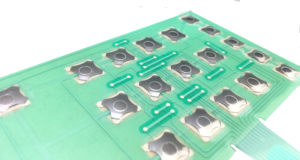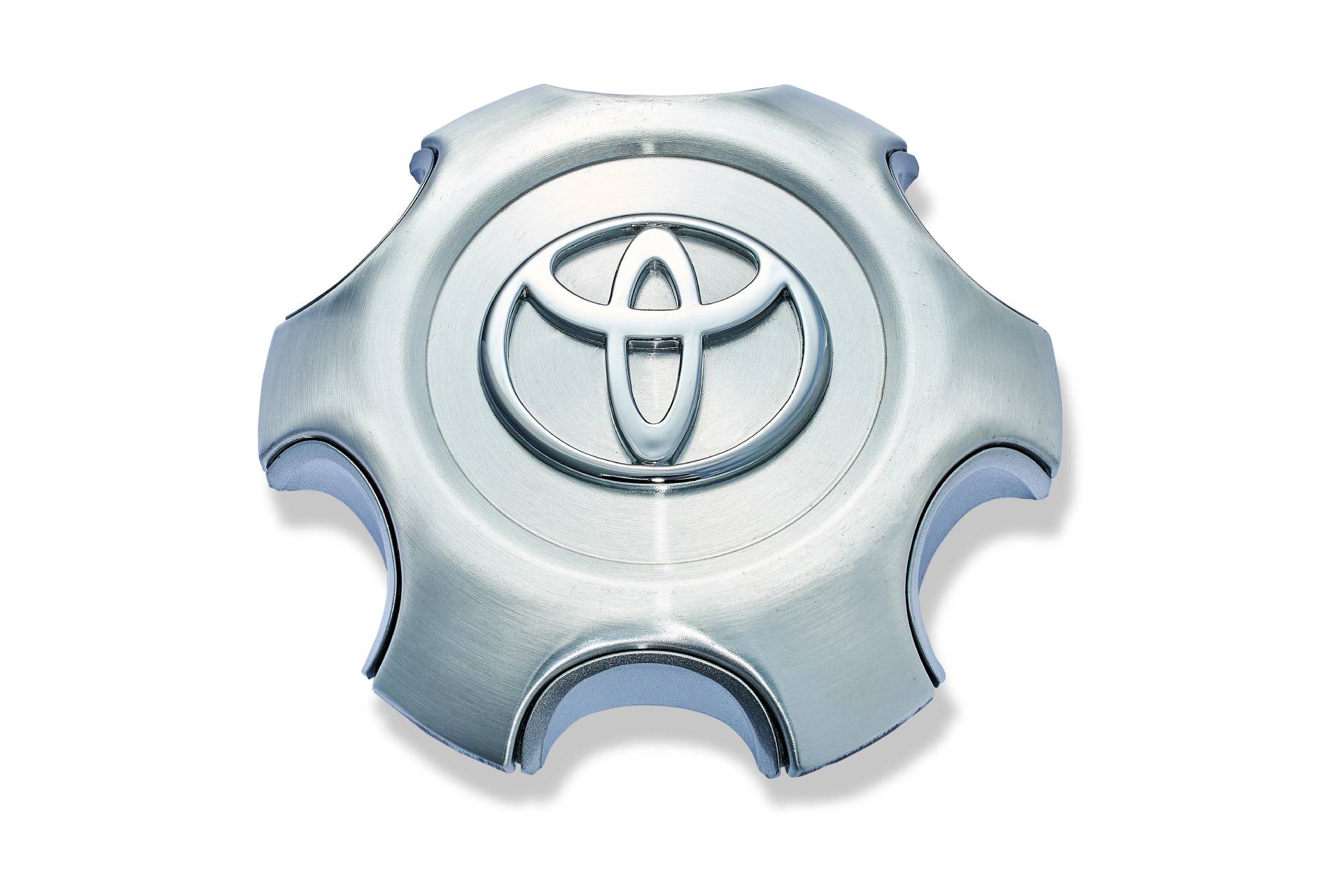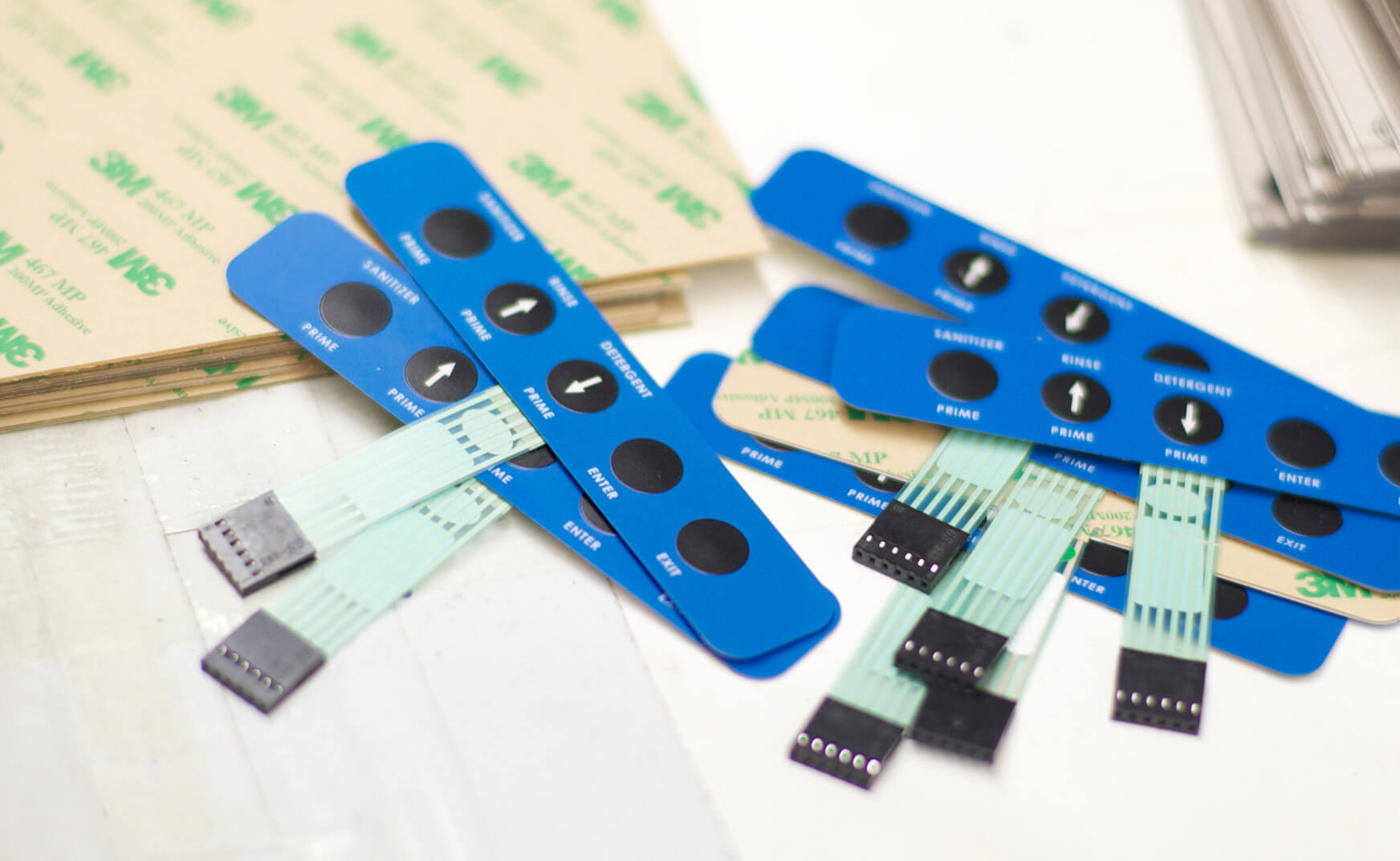All Concerning Membrane Switch Over: Comprehending Its Style and Functionality
When you think about the control user interfaces in contemporary tools, membrane switches commonly come to mind. Allow's explore what collections membrane switches over apart from other control systems.
What Are Membrane Buttons?

Their smooth nature makes them easy to clean and immune to dust and moisture, a vital attribute in lots of atmospheres. Membrane layer switches can also be personalized regarding shape, size, and graphics, permitting producers to create unique user interfaces customized to particular products. And also, they're lightweight and thin, which helps in minimizing the overall mass of gadgets. Overall, membrane buttons play a significant duty in improving customer experience across a broad selection of applications.
Just How Membrane Changes Job
When you push a trick on a membrane layer button, it triggers a simple yet reliable device. membrane switch manufacturer. The leading layer, typically made of adaptable product, presses down onto a conductive layer below it.
You'll notice that the tactile responses differs based upon the switch style, supplying either a soft click or a much more noticable feedback. When you launch the secret, the membrane layer returns to its initial position, reopening the circuit and quiting the signal. This procedure happens almost immediately, making sure a receptive user experience.
Membrane layer switches are preferred due to their durability and resistance to dust and dampness, making them optimal for various applications, from family home appliances to medical gadgets. Understanding this operation assists you appreciate their widespread use.
Trick Parts of Membrane Layer Buttons
Comprehending the key components of membrane layer buttons is basic for understanding their functionality and layout. The protective layer guards against ecological aspects and wear, expanding the switch's life-span. By understanding these parts, you'll get insight into how membrane layer switches operate and their importance in numerous applications.
Products Utilized in Membrane Change Layout
The efficiency and toughness of membrane changes greatly depend on the products used in their style. You typically come across polyester and polycarbonate as primary substratums as a result of their excellent toughness and adaptability. These products withstand scrapes and chemicals, making them excellent for demanding settings.
The conductive layers frequently make use of silver or carbon, chosen for their integrity and conductivity. membrane switch manufacturer. Silver offers exceptional performance, while carbon is an affordable choice. For the overlay, you could think about a matte or shiny surface, depending upon your visual requirements and individual experience
Adhesives play a necessary duty too; they bond layers safely and ensure long life. Make particular to select adhesives that withstand environmental aspects like temperature level and moisture. Finally, do not ignore the relevance of a good printing strategy for graphics, as it enhances both performance and aesthetic charm. Selecting the appropriate products will guarantee your membrane button stands the test of time.
Layout Considerations for Membrane Switches
While developing membrane buttons, it's essential to take into consideration numerous variables that influence their capability and customer experience. Start by concentrating on the design and button size; make sure they're intuitive and simple to browse. Take into consideration the tactile feedback you wish to provide-- will customers require an obvious click or a softer touch? Additionally, consider the materials you'll use, as they'll influence toughness and looks.
Confirm your design suits environmental factors, like dampness or temperature level variants, which could basics affect performance. By thoroughly thinking about these elements, you'll create a membrane switch that enhances usability and complete satisfaction.
Applications of Membrane Layer Buttons
Membrane switches are flexible parts located in numerous applications, from commercial tools to customer electronic devices. You'll see their influence in equipments that call for sturdy user interfaces and in tools that gain from smooth styles. Comprehending these applications assists you appreciate the functionality and practicality of membrane layer buttons in daily innovation.
Industrial Devices Use
When you're Check This Out looking to enhance the performance of industrial devices, membrane buttons offer a trusted option that incorporates longevity with user-friendly style. These buttons are best for rough environments, offering resistance to dirt, moisture, and chemicals. Accept membrane layer switches to streamline your procedures and boost overall efficiency.
Customer Electronics Integration
In the domain name of consumer electronic devices, membrane layer switches play an important duty in improving customer communication and tool capability. You'll locate them in devices like microwaves, remote controls, and pc gaming consoles, offering a seamless means to interact with modern technology. Their sleek style enables very easy assimilation into numerous products, making controls user-friendly and straightforward. With their capability to integrate graphics and backlighting, you can appreciate a modern visual that matches the tool's overall look. Membrane layer buttons likewise guarantee durability and resistance to dirt and moisture, expanding the life-span of your electronics. By choosing membrane switches, you improve not just the capability however additionally the design of your devices, making everyday interactions smooth and delightful.
Advantages and Disadvantages of Membrane Buttons
While membrane layer switches use a series of advantages, they also include some downsides that you ought to take into consideration. One significant benefit is their compact layout, making them excellent for space-constrained applications. They're additionally economical, providing a sturdy remedy with a reduced production expense. In enhancement, their seamless surface is very easy to clean, enhancing hygiene in atmospheres like health centers.

However, there are downsides. Membrane layer switches can have a much shorter life-span contrasted to mechanical switches, especially under hefty usage. They can also be much less tactile, which may affect user responses throughout procedure. Furthermore, if harmed, fixing them can be tough and typically requires full replacement. Eventually, their level of sensitivity to extreme temperature levels and ecological conditions might restrict their efficiency in specific setups. Stabilizing these advantages and disadvantages will help you establish if membrane switches are the best fit for your project.
Often Asked Questions
How Much Time Do Membrane Switches Over Typically Last?
Membrane layer switches over commonly last between 5 to ten years, depending upon usage and ecological conditions. You'll intend to assess variables like wear, exposure to dampness, and temperature level variations to determine their long life successfully.
Can Membrane Layer Switches Over Be Custom-made for Certain Designs?
Yes, you can personalize membrane layer switches to fit particular layouts (membrane switch manufacturer). You'll have the liberty to pick colors, forms, and formats that match your project's needs, guaranteeing they blend effortlessly with your general aesthetic
What Is the Cost Array for Membrane Switch Production?
The expense variety for membrane layer button manufacturing usually falls in between $1 and $10 per system, depending on factors like design complexity, quantity, and products. You can get quotes from producers to locate the finest option.

Are Membrane Layer Changes Water-proof or Resistant?
Membrane layer switches can be designed to be water-proof or immune, depending upon materials used and building techniques. If you need them for damp atmospheres, guarantee you define those requirements throughout the design procedure.
Exactly How Do Membrane Layer Changes Compare to Typical Buttons?
Membrane switches are generally thinner and a lot more flexible than conventional buttons, using a sleek design. They're commonly much easier to cleanse and incorporate, however could not supply the responsive comments you're utilized to with mechanical choices.
Final thought
